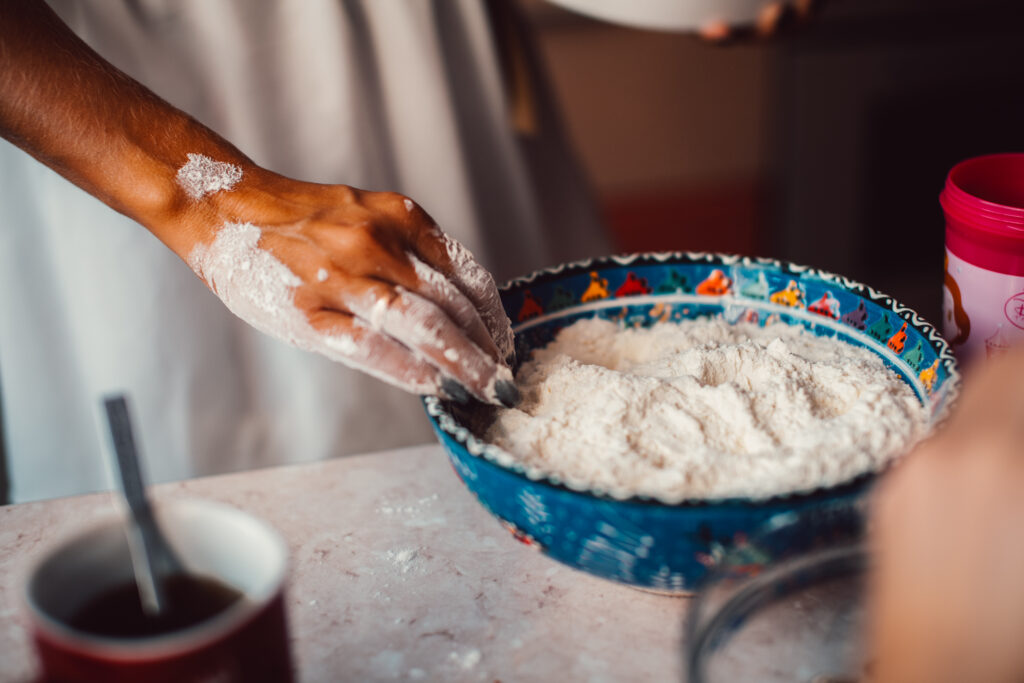A Salmonella outbreak linked to raw flour in at least 11 states is currently being investigated by the US Centers for Disease Control and Prevention (CDC). The agency is warning people not to eat or play with uncooked dough or batter after a dozen people have already been infected with the Salmonella infantis strain as of March 30.
Although only three hospitalizations have been reported in connection with the outbreak, the CDC said that the scale of the outbreak is probably much larger than the number of reported cases suggests. The agency said most people who fell ill reported eating raw dough or batter made with flour. Raw flour was the only common ingredient in the dough or batter that was eaten.
Because no specific brand of flour has been linked to the outbreak, no products have been recalled at this time. But this is far from the first foodborne illness outbreak linked to raw flour. So, why is this baking staple commonly linked to Salmonella, E. Coli and other foodborne illness outbreaks?
Related: New FDA Budget Downplays Food Safety, Again
Why Some Salmonella Outbreaks Were Linked to Raw Flour
Although many people think Salmonella can only be found in foods like raw eggs or raw chicken, it can also be found in raw flour. Flour doesn’t seem like a raw food, but most bagged flour that can be purchased from the grocery store is actually raw, meaning that it hasn’t been treated to kill the germs that cause food poisoning.
Raw flour is prone to contamination in the field by birds and animals as well as during harvest, transportation and processing. Many pathogens, including those that cause Salmonella, can survive with very little water. And no measures or interventions, like heating the grain to a temperature high enough to destroy pathogens, is used when flour is processed.
That’s why food safety experts warn consumers to be careful when handling flour and avoid eating raw cookie dough and cake batter made with untreated flour. According to the CDC, “You can get sick after eating or tasting raw dough or batter. Children can get sick from handling or eating raw dough used for crafts or play clay.”
History of E. coli Foodborne Illness Outbreaks Linked to Flour
In 2021, an E. coli outbreak linked to cake mix sickened at least 16 people in 12 states. Although the US Food and Drug Administration (FDA) conducted a traceback investigation using purchase records from locations where sick people bought cake mix, no common cake mix brand or production facility was identified in the outbreak, so no recall was issued.
In 2019, there was another E. coli outbreak, but this one was linked to flour produced by ADM Milling. The brands included in the outbreak were Pillsbury Best Bread Flour, ALDI Baker’s Corner All Purpose flour, King Arthur Flour and certain Brand Castle cookie and brownie mixes. The outbreak sickened at least 21 people in nine states and hospitalized three. As a result, ADM Milling Co and ALDI recalled five-pound bags of Baker’s Corner All Purpose Flour, select Brand Castle cookie and brownie mixes and Pillsbury Best Bread Flour.
In 2016, an E. coli outbreak linked to recalled General Mills Gold Medal flour sickened at least 63 people in 24 states. In 2015, another E. coli outbreak was linked to food served at Pizza Ranch restaurants and sickened at least 13 people in nine states. In 2009, 80 people in at least 31 states were infected with a single strain of E. coli linked to Nestlé Toll House brand cookie dough.
To avoid getting sick from raw flour, health officials advise consumers to never eat raw dough or batter, follow the recipe or package instructions for cooking or baking and store raw flour, dough or batter separately from foods that won’t be cooked.












Join or login to leave a comment
JOIN LOGIN